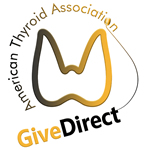BACKGROUND
Thyroid nodules are commonly found on medical imaging studies, such as Computerized Tomography (CT) scans, 18F-fluorodeoxyglucose (18F-FDG) positron emission tomography/CT (PET/CT) scans, or other imaging studies, which are performed for another reason (ie. the test is ordered without knowledge of the presence of a thyroid nodule). When thyroid nodules are detected on imaging studies performed for another reason, these are referred to as thyroid ‘incidentalomas.’ One of the questions that comes up after detecting a thyroid incidentaloma, is whether the nodule may be a thyroid cancer, and this question often results in additional testing to address the concern. This study was performed to investigate whether, in thyroid incidentilomas detected on PET/CT scan, the detailed features of the nodule on this the imaging study could predict whether the nodule was a cancer or not.
THE FULL ARTICLE TITLE:
Kim D et al. Risk stratification of thyroid incidentalomas found on PET/CT: The value of iodine content on noncontrast computed tomography. Thyroid. September 3, 2015 [Epub ahead of print].
SUMMARY OF THE STUDY
This patient chart review study was performed at Yonsei University College of Medicine in Korea. The study investigators identified 143 patients from their institution, who had thyroid incidentalomas noted upon PET/CT scans in 2011. Of these 143 patients, 61 were excluded from the study for a variety of reasons. The study included the other 82 patients, who had either a thyroid nodule biopsy or surgery to confirm if thyroid nodules were cancerous or not. The reasons why the PET/CT was originally performed was as follows: determining the stage of a known cancer (not thyroid, 33 individuals), follow-up of a




